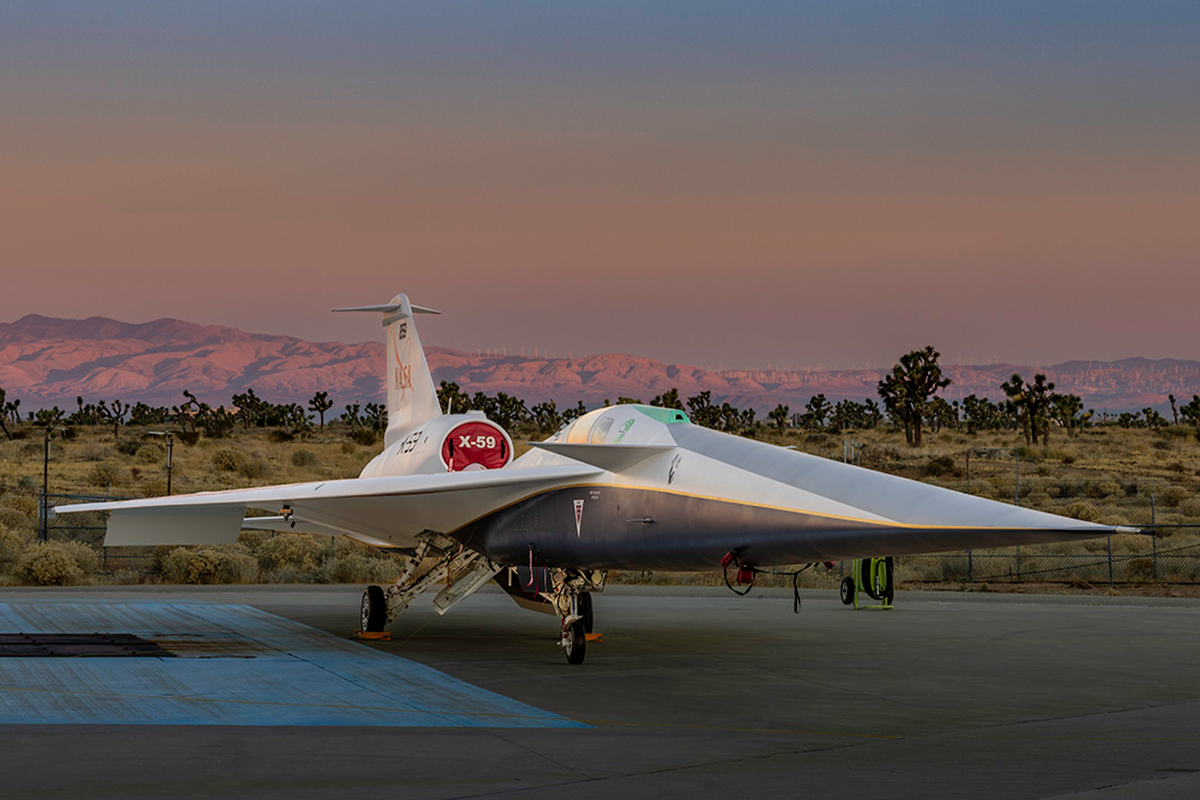The Slingshot Technique puts Aditya L1 closer to Sun
Aditya L1 departs from the Earth’s orbit via the slingshot technique. It is the brain of the ISRO scientists that…
NASA Unveils Supersonic Aircraft That Can Travel Faster Than Speed of Sound, here are the details of this modern supersonic aircraft.

On Friday American space agency NASA(National Aeronautics and Space Administration) unveiled the supersonic aircraft. This is an experimental commercial aircraft named, X-59, which was created by NASA in a joint event with Lockheed Martin Skunk Works in Palmdale, California. According to the reports, its top speed is 1.4 times the speed of sound which is approximately 1,488 kilometres per hour. As per the news this supersonic aircraft is set to take off for the first time later this year.
Features of the aircraft
The supersonic aircraft has a thin narrow front nose, which makes up approximately a third of its total length. This can deflect shock waves surrounding supersonic planes and cause sonic booms. According to the sources, the X-59 is 99.7 feet long and 29.5 feet broad. To boost the aircraft’s supersonic performance, engineers removed the forward-facing windows used in other aircraft and positioned the cockpit roughly halfway down its length. The engine is installed on top, and scientists “gave it a smooth underside to help keep shockwaves from merging behind the aircraft and causing a sonic boom.”
According to the Deputy Administrator of NASA Mr. Pam Melroy, “This is a major accomplishment made possible only through the hard work and ingenuity from NASA and the entire X-59 team.” He further added, “In just a few short years we’ve gone from an ambitious concept to reality. NASA’s X-59 will help change how we travel, bringing us closer together in less time.”
NASA’s Quesst Program
The X-59 is the focal point of NASA’s Quesst program, which intends to give information to help regulators re-evaluate restrictions that prohibit commercial supersonic flying over land. Because of the disruptive effects of the loud, unexpected sonic booms on adjacent towns, the United States and other countries have prohibited these flights for the past 50 years. The X-59 is expected to move at 1.4 times the speed of sound, with the jet’s shape, design, and technology allowing it to do so with a quieter thud.
After the flight tests are completed, NASA will fly the aircraft over many locations in the United States to get feedback on the sound the X-59 creates and how people perceive it. NASA will transmit the data to the Federal Aviation Administration as well as foreign agencies.
Advertisement